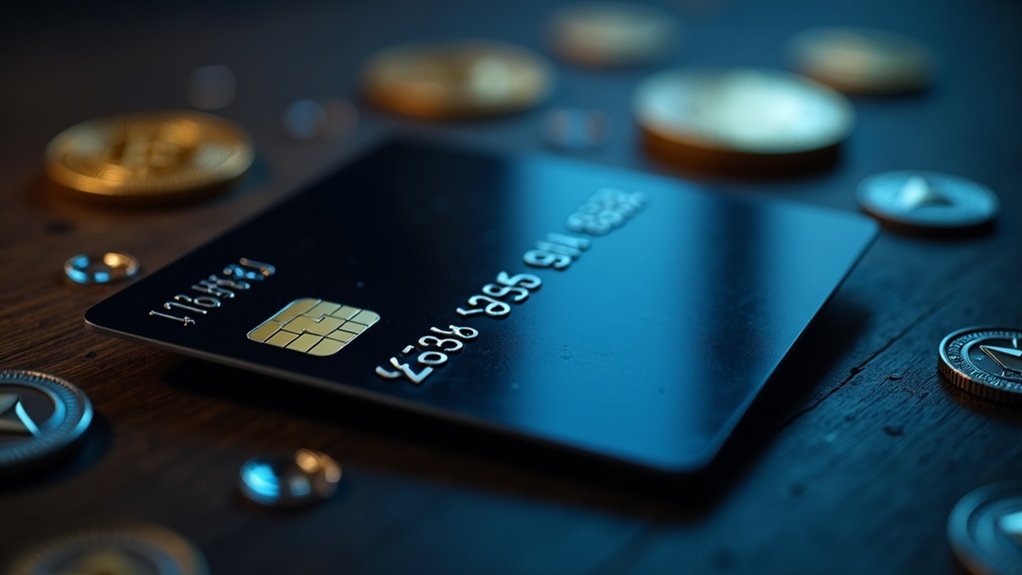Crypto banks bridge traditional finance and digital currencies. They let customers buy, sell, and hold cryptocurrencies while offering familiar banking services like loans and interest-bearing accounts. Users can spend crypto via debit cards, earn yield on holdings, and access custody services for security. These institutions follow KYC and AML regulations to protect customers. Cold storage and multi-signature wallets keep digital assets safe from hackers. The crypto-banking relationship continues evolving as regulations catch up.
While traditional banks have been around for centuries, crypto banks represent the cutting edge of financial evolution. They’re not your grandpa’s financial institutions. These hybrid entities manage transactions, accounts, lending, and investments using both cryptocurrencies and traditional money. Think of them as the awkward teenager bridging the gap between old-school banking and the wild west of digital assets.
Crypto banks serve as connectors between centralized and decentralized economies. Some are traditional banks that decided to get with the times, while others are crypto exchanges that figured they might as well offer banking services too. They exist to support crypto communities by handling blockchain-based operations without making users jump through a million hoops. Similar to how spot Bitcoin ETFs provide regulated exposure to cryptocurrencies, crypto banks offer institutional-grade services for digital assets.
Bridging financial worlds—these hybrid institutions are just traditional banks with a digital facelift or crypto platforms playing dress-up in banker’s clothes.
What makes them special? For starters, they let customers buy, sell, and hold cryptocurrencies right in their accounts. No need to visit seventeen different websites anymore. They offer crypto-backed loans, so people can borrow against their Bitcoin without selling it. Smart move. They also provide custody services to keep digital assets safe from hackers and that cousin who thinks he’s a computer genius. These institutions often facilitate fiat-to-crypto exchanges for users seeking a seamless transaction experience across both financial worlds. Many crypto banks also enable clients to earn yield on their digital assets through various investment products and interest-bearing accounts.
Users interact with crypto banks by holding digital currency balances, making payments with crypto debit cards, and earning interest on their holdings. You’ll need a wallet—either hosted by the bank or self-managed. Some platforms frustratingly restrict withdrawals, forcing users to convert to fiat first. Annoying, but that’s life.
The integration between crypto and traditional banking is where things get interesting. These institutions allow seamless interaction between dollars and digital assets, supporting stablecoins and facilitating conversions. They’re basically translators between two financial languages that often don’t want to talk to each other.
Security is non-negotiable for crypto banks. They employ cold storage, multi-signature wallets, and comply with regulations like KYC and AML. Because nothing says “trust us with your money” like following the rules—even in the supposedly rule-breaking world of crypto.
Frequently Asked Questions
How Are Crypto Banks Regulated Across Different Countries?
Crypto bank regulation varies wildly across the globe.
EU countries follow 5AMLD and MiCA frameworks, requiring KYC and AML compliance.
The UK has FCA oversight, while the US sports a regulatory mess with multiple agencies (SEC, CFTC, FinCEN) claiming jurisdiction.
Canada treats crypto businesses as MSBs.
China? Total ban.
Singapore’s approach is structured under their Payment Services Act.
No unified global standard exists – just a patchwork of rules that crypto banks must navigate.
Good luck with that.
What Fees Do Crypto Banks Typically Charge?
Crypto banks hit customers with various fees.
Trading fees split between makers (0.04-0.5%) and takers (0.05-0.7%).
Deposit fees? Depends. Some charge nothing, others slam you with 3.5% for card deposits.
Wire transfers might cost you a flat $10 or percentage fees.
Withdrawals range from free to 1%.
Then there’s those pesky network fees—blockchain charges that fluctuate wildly with congestion.
Some platforms also sneak in subscription fees or inactivity charges.
Nothing’s truly free in crypto-land.
Can Crypto Banks Be Insured Against Hacks?
Yes, crypto banks can get insurance against hacks, but it’s complicated.
Traditional deposit insurance (like FDIC) doesn’t cover crypto assets. Instead, some crypto banks buy private insurance policies – typically limited and expensive.
Coverage varies wildly and often excludes employee fraud or certain cyberattacks. Insurers demand serious security measures: cold storage, multi-sig wallets, the works.
Still evolving industry. Complete protection? Dream on. Most policies have significant gaps and exclusions.
How Do Crypto Bank Interest Rates Compare to Traditional Banks?
Crypto bank rates absolutely crush traditional ones. We’re talking 5-15% APY versus a measly 0.5-4.35% at traditional banks.
Stablecoins often earn the highest yields, up to 15% on platforms like YouHodler. Meanwhile, the average savings account at your local bank? A pathetic 0.06-0.5%.
The trade-off? Crypto lacks FDIC insurance and comes with way more risk.
Traditional banks are boring but safe. Higher rewards, higher risks. Simple math.
Can I Access My Crypto Assets During Market Volatility?
Yes, but with caveats. Most crypto banks offer 24/7 access to assets, but during market chaos, reality hits different.
Withdrawal restrictions suddenly appear. Network congestion slows transactions. Fees skyrocket. Some platforms like SoFi don’t allow direct crypto withdrawals at all—sell first, then transfer.
Custodial wallets give institutions control over when you can access your coins. Smart users diversify across platforms.
Non-custodial wallets provide more reliable access—if you can handle the responsibility.









